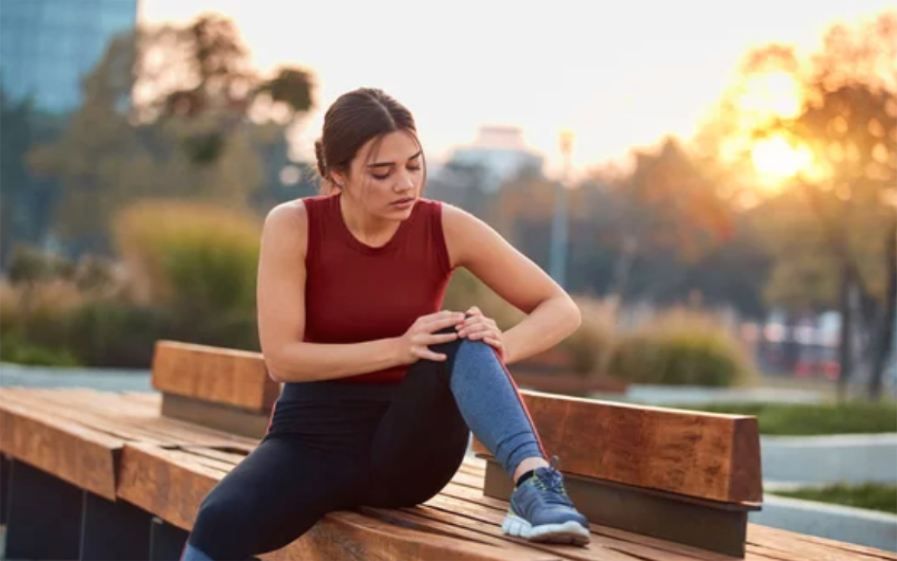WHAT WE TREAT
Sprains And Strains
Best Physiotherapist in Delhi
Learn about sprains and strains, their causes, first aid, and how physiotherapy plays a crucial role in pain management, recovery, and injury prevention. Get answers to FAQs about these common injuries.
Sprains And Strains
Sprains and strains are common injuries that can occur to muscles, ligaments, and tendons. Both injuries can cause pain, swelling, and limited mobility, but they are caused by different mechanisms.
Sprains
A sprain occurs when a ligament is stretched or torn, usually as a result of sudden twisting or wrenching of a joint. Ligaments are tough, fibrous tissues that connect bones to each other at joints, providing stability and support. The severity of a sprain can range from mild stretching to a complete tear of the ligament.
Strains
A strain, on the other hand, is an injury to a muscle or tendon, which is the fibrous tissue that connects muscles to bones. Strains can occur as a result of overstretching or overuse of a muscle, or from a sudden contraction of a muscle. They can also be caused by trauma or overexertion.

Common causes of sprains and strains include:
- Sports injuries:Activities that involve sudden movements, changes in direction, or contact with other players can increase the risk of sprains and strains.
- Falls:Landing awkwardly after a fall can cause sprains or strains to the affected joint or muscle.
- Repetitive motion:Overuse of a muscle or joint can lead to a strain or sprain.
- Poor conditioning:Muscles and joints that are not properly conditioned or strengthened are more prone to injury.
- Improper technique:Using improper form or technique when performing physical activities can increase the risk of injury.
- Aging:As we age, our joints and muscles become less flexible and more prone to injury.
- Obesity:Excess weight can put extra strain on joints, making them more susceptible to injury.
First aid for sprains and strains
The initial treatment for sprains and strains involves the RICE method:
- Rest:Rest the affected area to prevent further injury.
- Ice:Apply ice to the affected area for 20 minutes at a time, several times a day, to reduce pain and swelling.
- Compression:Wrap the affected area with an elastic bandage to help reduce swelling and provide support.
- Elevation:Elevate the affected area above heart level to help reduce swelling.
Other first aid measures for sprains and strains include:
- Avoiding activities that cause pain or discomfort.
- Taking over-the-counter pain medication, such as acetaminophen or ibuprofen, as directed to help relieve pain and reduce swelling.
- Using crutches or a brace to support the affected joint or limb.
- Resting the affected area for at least 24 to 48 hours after the injury occurs.
- Seeking medical attention if the injury is severe or if pain and swelling do not improve within a few days.
How physiotherapy helps in sprains and strains
Physiotherapy can be very effective in the management of sprains and strains. Here are some ways in which physiotherapy can help:
- Pain management:A physiotherapist can use various modalities such as ice, heat, ultrasound, electrical stimulation, and manual therapy techniques such as soft tissue manipulation to help manage pain.
- Restoration of range of motion and flexibility:A physiotherapist can design a specific exercise program to help restore range of motion and flexibility to the injured area. This may include stretching exercises, range of motion exercises, and joint mobilization techniques.
- Strengthening exercises:A physiotherapist can also design a specific exercise program to help strengthen the injured area. This may include resistance training exercises, functional training exercises, and balance exercises.
- Rehabilitation:If the injury is severe, a physiotherapist can help with the rehabilitation process. This may include working on gait training, balance, and coordination.
- Education: A physiotherapist can provide education on injury prevention and proper body mechanics to help prevent future injuries.
Overall, physiotherapy can help reduce pain, restore function, and improve the overall quality of life for individuals with sprains and strains.


Cutting-Edge Technology
Our commitment to using the best technology extends to various aspects of physiotherapy:
- Robotic Assistance: We employ robotics for gait training, aiding patients with mobility impairments. These devices facilitate improved motor control and muscle activation.
- Electrotherapy: Techniques like TENS, IFT, and Ultrasound Therapy are used to target pain relief and accelerate tissue healing.
- Virtual Reality (VR): We utilize VR and interactive gaming for engaging and enjoyable rehabilitation, increasing patient motivation and compliance with treatment.
Frequently Asked Questions
Reach out to us if you have further Questions - We're here to help!
Q1: What’s the difference between a sprain and a strain?
A1: A sprain is an injury to a ligament, which connects bone to bone, usually due to sudden twisting or wrenching of a joint. A strain, on the other hand, is an injury to a muscle or tendon, which connects muscle to bone, often caused by overstretching or overuse of a muscle.
Q2: How can I tell if I’ve sprained or strained a muscle or joint?
A2: The symptoms of both injuries can be similar and include pain, swelling, and limited mobility. However, sprains often involve joint instability, while strains may cause muscle spasms. An accurate diagnosis should be made by a healthcare professional.
Q3: What’s the best first-aid treatment for a sprain or strain?
A3: The RICE method is recommended: Rest the affected area, apply Ice to reduce pain and swelling, use Compression with an elastic bandage for support, and Elevate the injured area above heart level. Resting and avoiding activities that cause discomfort are crucial.
Q4: When should I seek medical attention for a sprain or strain?
A4: It’s advisable to seek medical attention if the injury is severe, if pain and swelling do not improve within a few days, or if you suspect a fracture. A healthcare provider can provide a proper diagnosis and treatment plan.
Q5: Can physiotherapy help with sprains and strains?
A5: Yes, physiotherapy can be very effective in managing sprains and strains. It can help with pain management, restoration of range of motion, strengthening exercises, rehabilitation, and education on injury prevention.
Q6: How long does it take to recover from a sprain or strain?
A6: The recovery time varies depending on the severity of the injury. Mild sprains or strains may recover in a few weeks, while more severe injuries may take several months. Physiotherapy can help speed up the recovery process.
Q7: Can I prevent sprains and strains?
A7: While not all injuries can be prevented, maintaining good physical conditioning, using proper techniques during physical activities, and avoiding overuse or excessive stress on muscles and joints can reduce the risk of sprains and strains.
Q8: Are there exercises or stretches I can do at home to prevent sprains and strains?
A8: Yes, there are various exercises and stretches that can help improve flexibility, strength, and balance, reducing the risk of sprains and strains. A physiotherapist can provide guidance on suitable exercises for your specific needs.
Q9: Are there any risk factors that make someone more prone to sprains and strains?
A9: Yes, risk factors can include participating in high-impact sports, poor conditioning, improper technique, age-related changes in flexibility, and obesity, which can put extra strain on joints and muscles.
Q10: What is the role of physiotherapy in rehabilitation after a severe sprain or strain?
A10: Physiotherapy can be essential for rehabilitation after a severe injury. A physiotherapist will develop a tailored treatment plan to help you regain strength, mobility, and function in the injured area, reducing the risk of reinjury.
Have Questions or Need Assistance?
Don’t hesitate to reach out to us:
Book Appointment with Experts
- Call/WhatsApp: +9818911195
- Book Appointment with Experts
We are here to lend our support on your journey toward improved movement and overall well-being.
See all Blogs & Articles
See all Conditions we Treat
Note: Content provided here is for informational purposes only and is not a substitute for professional medical advice or diagnosis. If you believe you are experiencing pain or any other health-related issue, it is important to seek the advice of qualified healthcare professionals for a proper evaluation and treatment plan.
See all How it Works.









